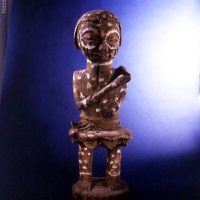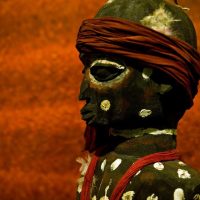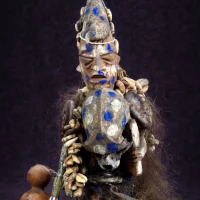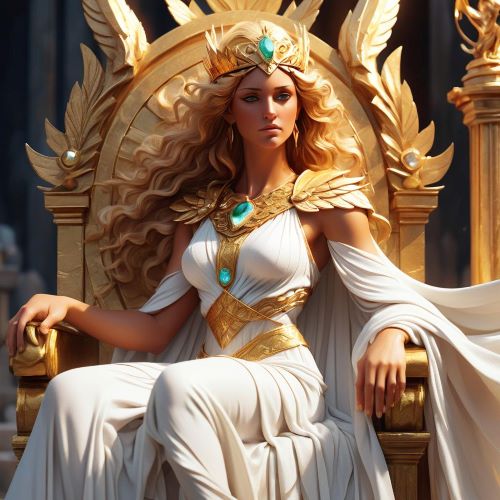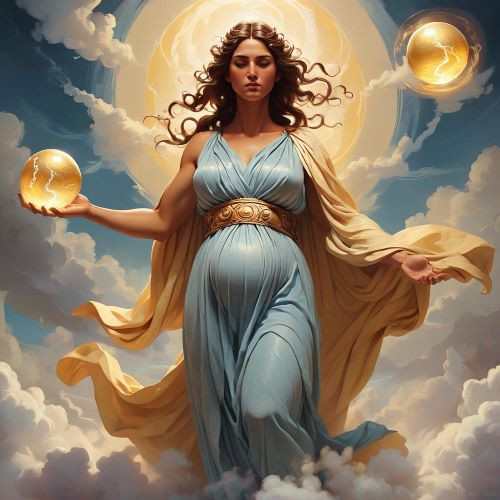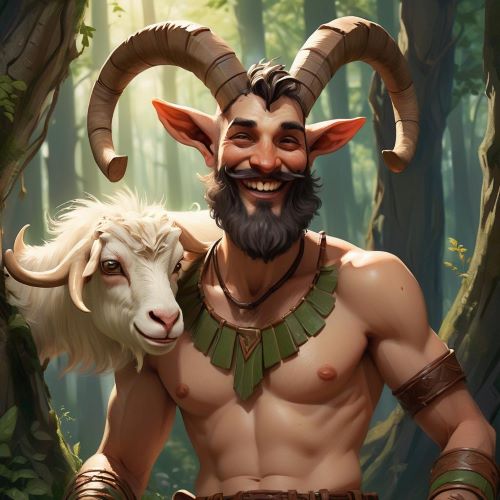Erinyes : Goddesses of Vengeance
Listen
At a glance
| Description | |
|---|---|
| Origin | Greek Mythology |
| Classification | Gods |
| Family Members | Uranus (Father) |
| Region | Greece |
| Associated With | Revenge, Torture, Hallucinations |
Erinyes
Introduction
The Erinyes, often referred to as the Eumenides or the Furies, are formidable figures in ancient Greek mythology, embodying vengeance and retribution. These chthonic goddesses, born from the primordial forces of the earth and vengeance, are particularly dreaded for their relentless pursuit of those who commit heinous crimes, especially against their own family. Their presence instills fear and despair, serving as a constant reminder of the inevitable punishment for wrongdoing. Known by various names and revered for their potent abilities, the Erinyes weave their enigmatic presence throughout myth and legend, leaving an indelible mark on the psyche of humanity.
Physical Traits
The Erinyes, depicted as three sisters, embody a dreadful countenance that aligns with their divine mandate. Their faces contort with fury, eyes ablaze with righteous anger, while their hair writhes with serpents, an eerie symbol of their fearsome nature. Draped in robes of darkness, they emit an aura of ominous foreboding, striking fear into both mortals and immortals alike. Their appearance serves as a stark reminder of the consequences of transgression and the inevitable arrival of divine retribution. Described as hideous crones with bodies as black as shadow and bloodshot eyes, they possess large claws on their hands and feet, along with wings resembling those of bats. In ancient art, they were often depicted with distinctive attributes such as wings, snake hair, hunting boots, and a short chiton. Carrying torches or whips, these symbols served as recognizable markers of their terrifying presence.
Across various depictions, their portrayal as aged women with wild, bloodshot eyes and a menacing demeanor remained consistent. Their hair, comprised of writhing snakes, added to their unsettling image, while wings hinted at their swift pursuit of targets. Clad in dark, tattered attire, they were unmistakably associated with the underworld. These fearsome features were deliberately crafted to evoke dread; the Erinyes were not intended to be comforting figures. Rather, their appearance served as a visual manifestation of the relentless pursuit of justice and the dire consequences of wrongdoing.
Family
The Erinyes, ancient deities whose origins are steeped in myth, are believed to have emerged from the blood of Uranus, the primordial god of the sky, after he was castrated by his son, Cronus. However, their lineage is subject to variation in different accounts. Some sources attribute their parentage to Nyx, the goddess of night, while others suggest they are the offspring of Hades and Persephone. Despite these discrepancies, the Erinyes are commonly portrayed as three sisters: Alecto, Megaera, and Tisiphone.
According to Hesiod, an influential Greek poet, the Erinyes sprang forth from the blood of Uranus, mingling with the primordial sea, and were thus associated with the earth and its primal forces. This connection underscores their role as enforcers of justice, ensuring order and balance in the cosmos. Conversely, Sophocles proposed that they were born from the union of Nyx and Gaea, emphasizing their affiliation with darkness and the unseen aspects of existence.
The depiction of the Erinyes as a singular, unified force contrasts with later interpretations that delineate them as three distinct goddesses, each embodying a specific aspect of vengeance. Alecto represents unceasing anger, Megaera embodies great anger, and Tisiphone serves as the avenger of murder. This tripartite division reflects the multifaceted nature of their vengeful purpose and reinforces their significance in mythological narratives.
Born from the blood of Uranus, the Erinyes emerged as manifestations of primal vengeance, their lineage intertwined with the primordial forces of the cosmos. Whether born from the blood of Uranus or the union of Nyx and Gaea, their origin stories underscore their role as agents of cosmic justice, ensuring that transgressions do not go unpunished in the intricate tapestry of Greek mythology.
Other names
In addition to their well-known appellation as the Erinyes, these goddesses are also recognized by the name Eumenides, a term translating to “well-meaning ones” in Greek. Throughout different regions and times, they were also alluded to by various euphemisms, seemingly aimed at mitigating their feared infernal powers. Among these alternate titles were “Semnae,” signifying “august ones,” employed for the goddesses in Athens, and “Ablabiae,” meaning “harmless ones,” utilized in Erythrae. The very mention of the name “Erinyes” was fraught with terror, prompting the Greeks to resort to euphemisms. “Eumenides,” denoting “the kindly ones,” emerged as a later, more pacifying term employed to mollify these formidable goddesses. “Semnai” (venerable ones) was another commonly used euphemism, acknowledging their might and significance while endeavoring to avert their ire.
These alternate designations hint at a potential shift in the perception of the Erinyes over time. It is conceivable that they came to be viewed not solely as instruments of unadulterated vengeance but also as upholders of an indispensable cosmic equilibrium. Employing these euphemisms might be construed as an effort to garner their benevolence and ensure an equitable resolution, rather than merely dread their retribution.
Across various mythological traditions, the Erinyes are recognized by a multitude of names. Apart from their Greek epithet, they are also identified as the Furies, a term stemming from the Latin “furor,” connoting fury or rage. Within Roman mythology, they are dubbed the Dirae or the Eumenides, epitomizing their dual role as agents of retribution and beneficent entities of purification. Despite the nuanced nomenclature, their fundamental essence remains unaltered, embodying enduring principles of justice and retribution.
Powers and Abilities
Renowned for their formidable powers, the Erinyes wield terror-inducing abilities that transcend mortal comprehension. Their capacity to induce madness serves as an enduring psychological torment, inflicting eternal punishment upon their targets. Furthermore, they possess the capability to unleash plagues, not only afflicting individuals but entire communities, thereby enacting collective retribution for societal transgressions. With a mere whim, they can strip individuals of reason, plunging them into darkness with afflictions such as blindness or insanity.
As custodians of divine retribution, the Erinyes command authority over a vast array of powers, relentlessly pursuing and tormenting wrongdoers. Their ominous presence is accompanied by an unsettling sense of dread, heralding the imminent arrival of divine justice. They hold sway over oaths and contracts, ensuring that no transgression remains unpunished and no injustice goes unaddressed. Their dominion extends beyond mortal realms, exerting influence over gods and titans alike, enforcing the unyielding laws of the cosmos.
The Erinyes’ formidable arsenal of powers renders them truly terrifying figures. They have the ability to inflict madness upon their quarry, driving them to the brink of self-destruction or subjecting them to agonizing mental torment. Their piercing screams have been described as capable of shattering the strongest wills, leaving their victims in a state of perpetual anguish. Moreover, they can unleash plagues and misfortunes, ensuring that their targets’ lives are inundated with suffering and misery.
Perhaps most chilling is their capacity to torment the guilty even in the afterlife. In certain accounts, they are depicted as dwellers of the underworld, alongside Hades and Persephone, where they continue their relentless pursuit of retribution, tormenting the souls of those who wronged them. However, the Erinyes are not mere instruments of blind vengeance; they possess discernment, allowing them to differentiate between right and wrong. This enables them to focus their wrath on those truly deserving of punishment, ensuring that justice prevails in the cosmic order.
Modern Day Influence
The influence of the Erinyes extends far beyond ancient mythology, permeating modern literature and media with their timeless presence. In the movie saga Alien, their influence is palpable, shaping the narrative with echoes of their relentless pursuit and vengeance. Similarly, Jonathan Littell’s 2006 holocaust novel, The Kindly One, draws upon essential themes found in Aeschylus’ trilogy, echoing the enduring legacy of the Erinyes. Additionally, in the video game God of War: Ascension, they emerge as formidable adversaries, embodying the wrathful spirits of vengeance.
Despite the passage of millennia since their inception in ancient Greece, the Erinyes’ legacy remains palpable in contemporary culture, subtly weaving through literature, art, and popular media. Characters infused with a sense of moral righteousness often mirror the spirit of the Erinyes, seeking retribution for perceived injustices in literature. In art, their fearsome visage continues to captivate and inspire, serving as a potent reminder of the enduring power of myth and legend. In popular media, references to the Erinyes abound, manifesting in the portrayal of avenging angels and vigilant justice-seekers.
The Erinyes persist as captivating figures in our collective imagination, their image recurrently depicted across various forms of media, from literature and theatre to film and television. Symbolizing the innate human desire for justice, they embody the timeless archetype of vengeance and retribution. Their stories resonate deeply, reflecting our inherent yearning to witness the redress of wrongs. Thus, the Erinyes serve as a potent reminder that even the most formidable individuals cannot evade the consequences of their actions in the grand tapestry of existence.
Related Images
Frequently Asked Questions
What is lorem Ipsum?
I am text block. Click edit button to change this text. Lorem ipsum dolor sit amet, consectetur adipiscing elit. Ut elit tellus, luctus nec ullamcorper mattis, pulvinar dapibus leo.
What is lorem Ipsum?
I am text block. Click edit button to change this text. Lorem ipsum dolor sit amet, consectetur adipiscing elit. Ut elit tellus, luctus nec ullamcorper mattis, pulvinar dapibus leo.
What is lorem Ipsum?
I am text block. Click edit button to change this text. Lorem ipsum dolor sit amet, consectetur adipiscing elit. Ut elit tellus, luctus nec ullamcorper mattis, pulvinar dapibus leo.
What is lorem Ipsum?
I am text block. Click edit button to change this text. Lorem ipsum dolor sit amet, consectetur adipiscing elit. Ut elit tellus, luctus nec ullamcorper mattis, pulvinar dapibus leo.
What is lorem Ipsum?
I am text block. Click edit button to change this text. Lorem ipsum dolor sit amet, consectetur adipiscing elit. Ut elit tellus, luctus nec ullamcorper mattis, pulvinar dapibus leo.


